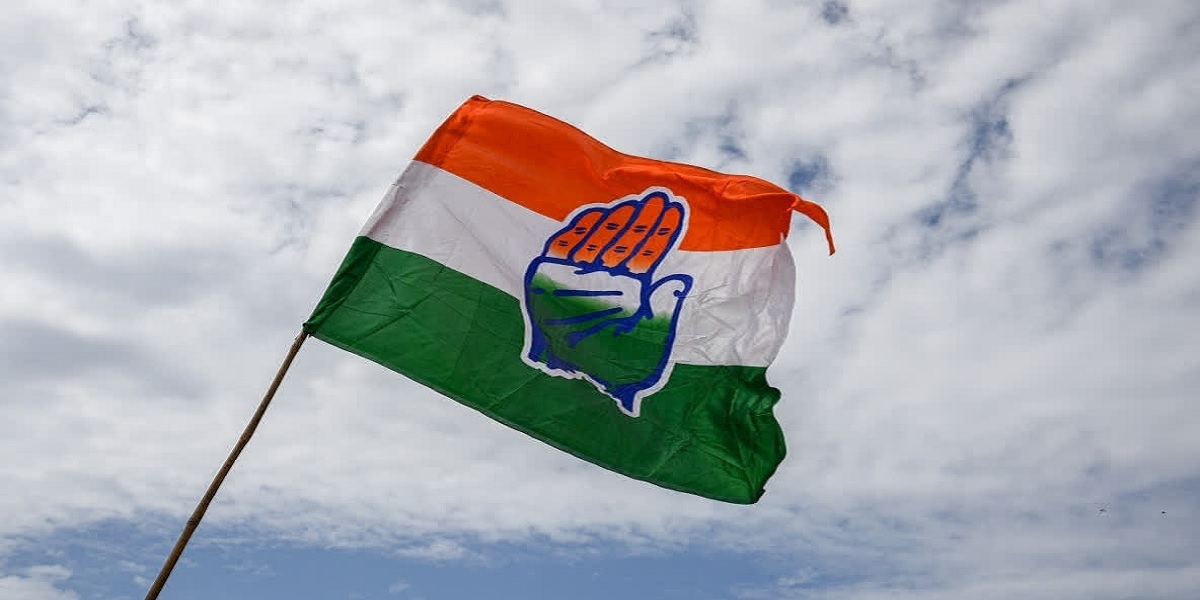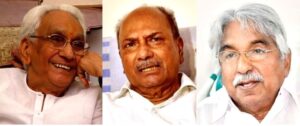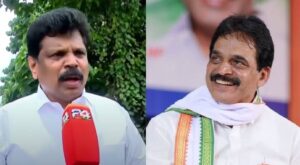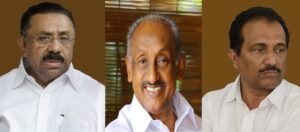The factional culture in Congress began even before the formation of Kerala in 1956. Leaders R Shankar and PT Chacko once formed a powerful duo, but their eventual split gave rise to new groups.
Published Sep 18, 2025 | 2:07 PM ⚊ Updated Sep 18, 2025 | 2:07 PM

The upcoming assembly and local body elections will decide the future of Congress in Kerala, as the party has been out of power for the past two consecutive years.
Synopsis: After allegations of sexual misconduct were levelled against Palakkad MLA Rahul Mamkoottathil, two things happened within the party: Ground-level workers and local leaders lost confidence, and factionalism made a comeback with double the force.
The upcoming elections to local bodies and the Assembly and will decide the future of Congress in Kerala, as the party has been out of power for the past two consecutive years. It’s a do-or-die battle for Congress.
After allegations of sexual misconduct were levelled against Palakkad MLA Rahul Mamkoottathil, two things happened within the party: Ground-level workers and local leaders lost confidence, and factionalism made a comeback with double the force.
The Opposition Leader VD Satheesan, who somehow managed to unite every group within the party, claimed that the UDF will win 100 seats in Kerala. But is it that easy to reach this number? Will factionalism hurt or help Congress in this critical fight?
Rahul’s entry into the Assembly took place with the consent of senior Congress leaders and KPCC chief Sunny Joseph, marking a setback for Satheesan, who had taken a firm stand against him. The initiatives by the A Group within Congress, which facilitated Rahul’s path, received support from the KPCC as well.

K Karunakaran, A.K Antony and Oommen Chandy
Those who initially backed Satheesan’s move to take disciplinary action against Rahul later united against him, opposing his persistent stance against Rahul, which could potentially impact the party.
When South First reached out to Palakkad Congress Councilor Mansoor Manalancherry, he said that attacking and isolating Rahul at this stage would harm the party. He added that once the MLA returns to his constituency in Palakkad, they will ensure his protection.
”This is not the time for internal rivalry. It is high time to stay united and focus on the upcoming elections,” he stated.
The factional culture in Congress began even before the formation of Kerala in 1956. Leaders R Shankar and PT Chacko once formed a powerful duo, but their eventual split gave rise to new groups.
That division led to the birth of the Kerala Congress party, initially strong in Travancore, which later fragmented further into Kerala Congress (M), Kerala Congress (J), Kerala Congress (B), and many more offshoots.
In Kerala Congress politics, K Karunakaran’s Congress (I) group was once the most crowded and influential, while AK Antony’s Congress (A) group stood apart with its strict rules and cadre-style functioning. Later, Oommen Chandy took charge of the A group, and Ramesh Chennithala assumed leadership of the I group.
Over time, though many smaller factions emerged, the A and I groups remained the two central power blocs. Interestingly, new sub-groups within the main groups also began to take shape, reshaping the internal dynamics of the party.

A.P Anilkumar and K.C Venugopal
The most powerful among them today is the KC Venugopal faction within the I group. This faction gained prominence after Venugopal rose to national leadership. His team is highly organized, with a strong cyber presence, dedicated ground workers, and even networks inside other factions. AP Anilkumar, Venugopal’s close aide, plays a key role in this camp.
The second most influential faction is that of Satheesan, also within the I group. As the current Leader of the Opposition, Satheesan’s faction wields considerable influence, particularly in his home district, Ernakulam.
The K Sudhakaran faction in I group, which grew in prominence after Sudhakaran became KPCC president, is considered the third strongest. Leaders like K Jayanth and M Liju are central figures of the group.
Congress (I) group’s Ramesh Chennithala faction, though no longer as dominant as before, continues to be one of the most hardworking groups on the ground and in digital spaces. Leaders such as Anvar Sadath, Jyothikumar Chamakkala, and Joseph Vazhakkan are active alongside Chennithala in attempts at a political comeback.
Meanwhile, the K Muraleedharan faction of the I group also exists, but it lacks major decision-making power. However, it continues to hold influence in certain local pockets.
The future of Congress’s A group, once led by Oommen Chandy, was left uncertain after his demise. However, according to party sources, the faction is now staging a strong comeback within the party.

M.M. Hassan, K.C. Joseph, and Benny Behanan
The traditional A group has reorganised itself under a new hierarchy. At the senior cadre level are leaders such as MM.Hassan, KC Joseph, and Benny Behanan. The younger cadre, meanwhile, is led by Shafi Parambil, Dean Kuriakose, Rahul Mamkoottathil, and several other emerging faces. Interestingly, PC Vishnunath is the only leader who commands influence across both levels, acting as a bridge to maintain the unity of the A group—though internal differences remain.
Within this setup, Thiruvanchoor Radhakrishnan’s faction continues to hold sway in Travancore and enjoys strong ties with both Venugopal and Satheesan. T Siddique leads another faction within A group, working to build his own base in the Malabar region. He is seen as being closely aligned with Venugopal and the central leadership.
What adds intrigue to the current dynamics is that Oommen Chandy’s son, Chandy Oommen, does not identify himself with the traditional A group. Instead, he is shaping his own circle of young supporters—often unwilling to work under Shafi Parambil or Satheesan. This emerging, nameless faction also maintains links with Venugopal, further complicating the factional equations.
The only faction that consistently claims not to be a faction is the Shashi Tharoor camp. This group includes Thampanoor Ravi and Tharoor fans within the Congress, many of whom believe Tharoor should eventually emerge as the party’s supremo in Kerala.
According to political researcher Mini Mohan, the real issue is not factionalism but the setbacks faced by leaders once expected to spearhead the Congress campaign. Today, the party lacks a figure with the stature and authority of K Karunakaran or Oommen Chandy to take charge comprehensively.
Leaders such as Shafi Parambil, VT Balram, and Mathew Kuzhalnadan have been effectively sidelined by the CPM—a strategic victory ahead of the upcoming elections.
”The problem is that the Congress leadership fails to grasp this silencing tactic in politics” she told South First.
The reality today is that almost every leader has turned into a faction of their own. Among them, the most powerful remains the Venugopal camp. Even senior leaders like Ramesh Chennithala rally behind him, given his towering influence at the national level.
What sets Venugopal apart is his ability to balance his demanding role in Delhi with a strong presence in Kerala—maintaining active engagement with his turf and nurturing ties with local leaders.
A party insider told South First that the only way to curb this growing factionalism is through a complete revamp of the KPCC general secretaries, DCC chiefs, and office-bearers. While Satheesan and Chennithala have made a handful of recommendations for the new list, Sudhakaran has reportedly put forward more than 60 names.
On the ground, party workers and local leaders are struggling under immense pressure, especially when it comes to maintaining unity. Adding to this, AICC observers from other states are said to be monitoring the situation closely and even contacting local leaders directly for updates.
In 2021, the Congress managed just 21 seats in Kerala’s 140-member Assembly—barely different from its 2016 tally of 22. A decade earlier, when the UDF held power in 2011, the party had 38 MLAs. In 2006, it slipped to 24, and its last big victory was way back in 2001 with 63 seats, when the UDF also bagged 49.05% of the vote share.
These numbers tell their own story- hitting the 100-seat mark, as Satheesan boldly claims for the coming polls, is no walk in the park. With factions within factions and leaders treating themselves as satraps, the Congress must wake up to reality or risk writing its own political obituary.
(Edited by Majnu Babu).
